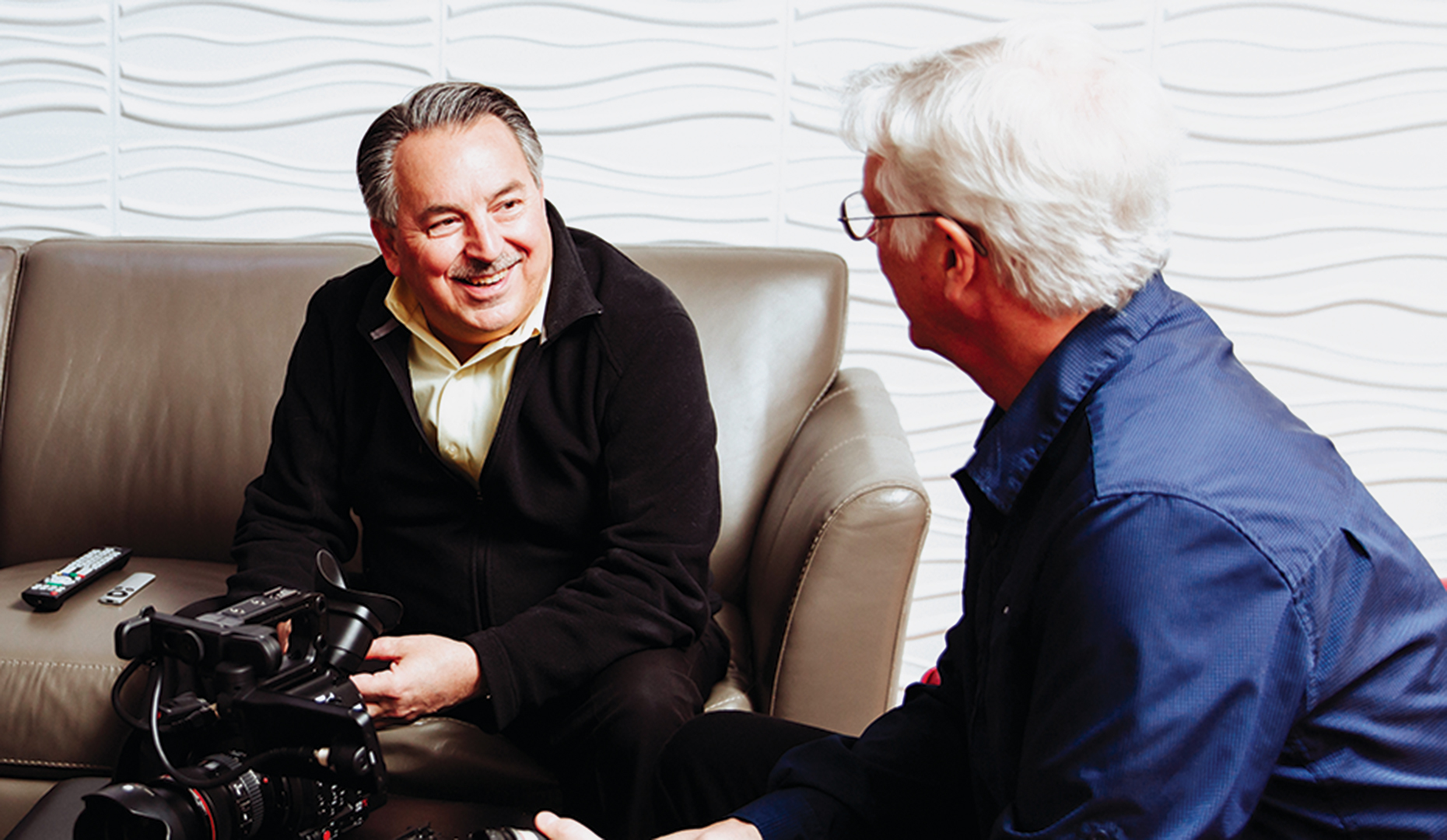A Q+A with Michael Betz, President and Co-Owner of ImageStream.
How do you approach design at ImageStream?
My business partner Tom Brooks and I started this company 20 years ago, in 1999. We were working for Pharmacia & Upjohn, handling its media center here in Kalamazoo. But when the company started moving its jobs to New Jersey [after it was acquired by Pfizer], we were offered new jobs. We had kids in school at the time, and we didn’t want to uproot our lives. So, Tom and I prepared a business plan and decided to buy the company and start ImageStream. It was a leap of faith, but, over the years, ImageStream has grown. We have a team of experts in live event production, lighting, staging, sound projection, technology, videography—you name it. Essentially, we are visual storytellers. What our team does involves music, images, critical editing decisions, and writing. Every single one of those is its own creative pursuit, and we’re lucky to get to play in those fields every day. It’s wonderful in that way.
What is your favorite part of the work you do?
What I like best is the variety of projects that come through our door. One day, I could be over at Pfizer, gowned up in a bunny suit, shooting pharmaceutical vials racing down a production line in a sterile environment. But the next day, I could be out at a farm in Richland in hip boots, videoing a dairy facility. I love that I am always learning new things while helping tell the story of my community.
Which projects are the most rewarding?
It’s exhilarating to do live events because they’re terrifying and fun at the same time. There are no do-overs in a live event. Everything has to be 100 percent, or you failed. If something goes wrong and all of a sudden the lights go out, that’s all anyone will remember. We pride ourselves on absolutely flawless execution. It’s a lot of pressure, but it’s thrilling to be at the heart of the action.
How do you drive creativity?
It’s all about collaboration. The group will always come up with a better result than any individual. When my team is working on a project, we sit together in our creative suite and get comfortable. We get together and kick around ideas. No idea is too silly or stupid to bring up. More often than not, it’s the dumbest ideas that have the potential to branch off in a new direction that we would never have considered.
Where did your interest in visual arts begin?
I have been doing this sort of stuff for over 45 years. In the early 1970s, my dad wanted my brother and me to stay out of trouble, so he bought a camera and built a darkroom in the basement. I took to it right away. I got my first photography gig at a jazz concert held by a local high school. They had invited all the jazz greats, like Count Basie, Maynard Ferguson, and Duke Ellington. One of my favorite memories came after I sold Dave Brubeck a package of shots from that day. About a month later, I got an envelope in the mail. It was one of my close-up shots, signed, “Thanks, Michael. Awesome photography. Dave Brubeck.” After that, I was hooked.
How has your field changed over the years?
Back when I was selling photos to jazz artists, Sony had just come out with a new camera. It was called the Sony Rover Portapak. It had a backpack video recorder with reel-to-reel tape a half-inch wide: black and white. But at the time, it was the most impressive piece of equipment in the world. Today, everyone is walking around carrying a 4K video recorder in the palm of their hand. We’ve experienced a huge change in technology even in the 20 years that ImageStream has been in existence. Tom and I started with cutting-edge Sony Betacam camcorders, which now look like huge, outdated behemoths that still use videotapes. It’s tremendous what we can accomplish with today’s technology.
What skills are most important for a creative professional?
The same skills that lead to success in every other field: the soft skills, the people skills. We just bought a brand-new camera that we could teach you to operate. You might be pretty good at it with some practice. But if you show up on the set and you can’t interact with the client, it’s over. Relationship-building is critical. The skills that can’t be taught are the most important.
What advice would you give to an aspiring creative?
The joke is: Don’t do it. But the reality is that the creative field is no different from any other—it’s going to take a lot of hard work no matter what, and there will always be a whole lot of people going after the same job you are. But working in any artistic profession is wonderful and rewarding. If you’ve got the talent and the right mindset, this is a great field to be in.

